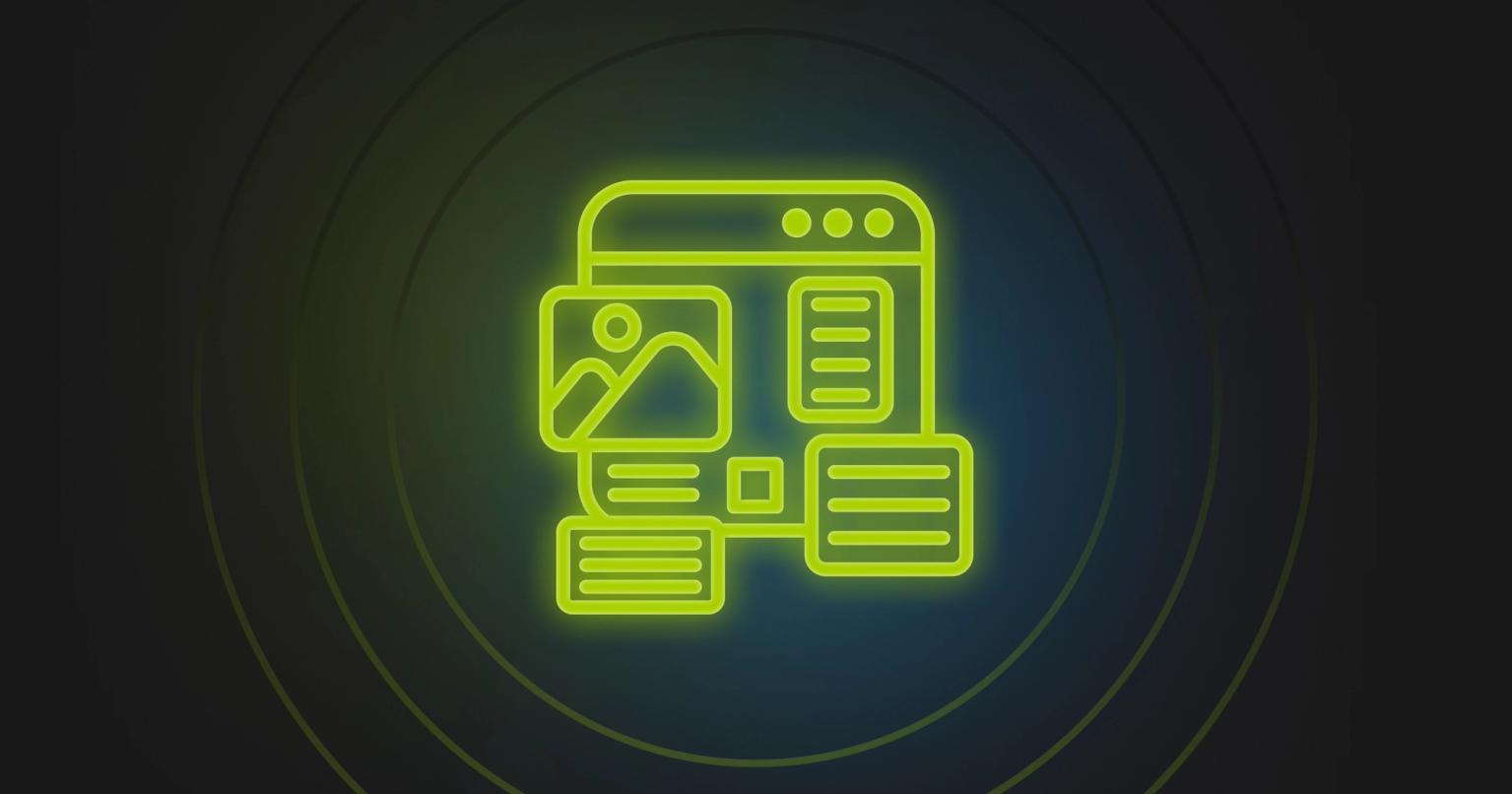From Figma to Your MAP in Minutes: The New Email Production Workflow

Summary
Tired of email production delays? Learn how to turn Figma designs into responsive MAP-ready emails with no dev work.
Remember the last time you watched a designer hand off an email mockup? If you're like most marketing ops professionals, the memory probably involves a PDF attachment, multiple screenshot emails, and that sinking feeling of "here we go again."
The traditional email production workflow is broken. We all know it. Designers create beautiful mockups in Figma, then everything grinds to a halt. Developers rebuild from scratch. Revisions multiply. Deadlines slip. And somewhere between that perfect Figma design and your marketing automation platform, quality gets lost in translation.
But what if you could skip all that? What if your Figma designs could flow directly into Marketo, Salesforce Marketing Cloud, or HubSpot—fully coded, responsive, and ready to personalize?
That future is already here. Teams are cutting email production time by 90% while actually improving quality. Let's explore how the new email production workflow is transforming marketing operations.
The problem with traditional email production
Traditional email workflows follow a predictable pattern of pain. Designers work their magic in Figma, creating pixel-perfect layouts that showcase the brand beautifully. Then comes the handoff—usually a PDF or screenshot dumped into Slack with a hopeful "let me know if you have questions!"
Before modern collaboration tools, design handoff was "a file-sharing nightmare" where designers manually added redlines to design files, saved them as locked files or PDFs, and prayed developers were working on the correct version. Sound familiar?
The developer now faces a puzzle. They must interpret static images and recreate the entire design in HTML—table by table, cell by cell. Questions arise immediately. What's the exact spacing here? How should this stack on mobile? What happens when the headline runs longer?
Back and forth they go. The designer clarifies. The developer adjusts. Marketing checks the result and finds issues. More revisions. More delays. By the time the email launches, everyone's frustrated, and the campaign impact suffers from the delayed timeline.
Version control chaos
Without proper systems, email production descends into version control hell. Files multiply like rabbits: "Document Name v7", "Document_Name_final_2", "Document-Name-new", and the dreaded "Document-Name-FINAL-FINAL-USE-THIS-ONE."
Teams waste hours hunting for the right file. Developers build from outdated versions. Changes get lost. One study found teams spend up to 20% of their time just managing file versions and clarifying which design is current.
The hidden costs add up
Beyond the obvious time waste, traditional workflows create hidden costs. Skilled developers spend time on repetitive HTML table construction instead of strategic work. Designers get pulled into endless revision cycles. Marketing teams miss optimal send times waiting for production to finish.
Consider personalization. Modern email marketing requires sophisticated dynamic content. Research shows 63% of marketing automation usage comes from emails, and automated emails generate 31% of all email orders. Yet traditional workflows make personalization painful. Every merge tag must be manually coded. Every dynamic section requires custom development. Testing multiplies exponentially.
Why manual rebuilds kill productivity
The manual rebuild process isn't just slow—it's fundamentally flawed. When developers recreate designs from static images, they're making hundreds of micro-decisions. Should this padding be 15 or 20 pixels? Is this gray #666666 or #777777? These tiny interpretation errors compound into major design drift.
Testing reveals the real nightmare. What looked perfect in the developer's browser breaks in Outlook. The mobile version has overlapping text. Dark mode turns white text invisible. Back to development for another round of fixes.
The QA process alone can consume days. Despite 65% of email marketers using analytics and performance dashboards for QA, only 47% use email rendering and compatibility checks—the one method that actually prevents issues before they reach subscribers.
When localization multiplies the pain
Need that email in five languages? Multiply every problem by five. Each language requires its own template. Updates to the master design must cascade through every variant. Translation management becomes a full-time job.
Marketing teams report spending up to 40% more time on multilingual campaigns due to workflow inefficiencies. Text expansion in languages like German breaks layouts. Right-to-left languages like Arabic require completely different templates. What should be a simple campaign becomes a complex project management exercise.
The personalization puzzle
Static mockups can't show dynamic content. How do you indicate where {{first_name}} should appear? What about conditional content blocks that only show for certain segments? Designers resort to awkward annotations. Developers interpret as best they can. The result rarely matches the intent.
This limitation hits hardest with sophisticated personalization. Modern campaigns might include product recommendations, location-based content, behavioral triggers, and preference-based sections. Conveying all these variables through static PDFs is like explaining a movie through still photos—technically possible but painfully inadequate.
Enter design-to-MAP solutions
A new category of tools is eliminating these workflow bottlenecks entirely. Design-to-MAP solutions connect Figma directly to marketing automation platforms, automating the entire production process.
Instead of static handoffs, these tools read Figma designs and automatically generate production-ready HTML. Knak's Figma plugin transforms designs into production-ready emails that work seamlessly with all major marketing automation platforms including Marketo, Salesforce Marketing Cloud, Eloqua, and HubSpot. Designers sync their work directly from Figma into Knak—no developer required.
The transformation is dramatic. What once took days now takes minutes. A designer finalizes the layout in Figma, clicks export, and the email appears in the MAP ready for campaign configuration. No PDFs. No rebuilding. No interpretation errors.
How modern workflows actually work
The new workflow follows a streamlined path:
Design in Figma: Designers work in their preferred environment using email-optimized components. These aren't regular Figma components—they're built specifically for email constraints while maintaining design flexibility.
One-Click Export: When the design is ready, designers export directly to the MAP. The tool reads the Figma layers, generates table-based HTML with inline CSS, and handles all the technical requirements automatically.
Automatic Code Generation: Behind the scenes, sophisticated algorithms convert modern design layouts into email-compatible code. Flexbox layouts become nested tables. RGB colors convert to hex values. Fonts map to email-safe stacks.
Platform Integration: The HTML arrives in your MAP through API integration. In Marketo, it appears as a new email template. In Salesforce Marketing Cloud, it's ready in Content Builder. No manual uploading or code pasting required.
Dynamic Content Preserved: Merge tags and personalization tokens integrate automatically. The system recognizes placeholder text and converts it to platform-specific variables. {{first_name}} in Figma becomes %%first_name%% in Salesforce Marketing Cloud.
Real teams, real results
The impact on production timelines is staggering. Knak discovered this firsthand during their own rebranding, when their marketing ops team spent many hours rebuilding Figma designs inside Knak—duplicating work their designers had already completed. Now with the plugin, as customer Erik Vrielink from IEEE Spectrum notes, "The design handoff is so much more efficient! Having the framework of the design set up automatically gives us more time to elevate the design."
Consider what this means practically. A campaign that took two weeks from design to deployment now launches in a day. Weekly newsletters that consumed 20 hours of production time now require two. Teams can test more variations, iterate faster, and respond to market changes in real-time.
Quality improves alongside speed. Automated code generation eliminates human error in the rebuild process. Designs translate perfectly because there's no manual interpretation. Testing catches fewer issues because fewer issues exist in the first place.
How Figma actually connects to your MAP
Let's be clear: Figma doesn't have a magic "Export to Marketo" button. There's no native integration with Salesforce Marketing Cloud, Eloqua, or HubSpot. Instead, the connection happens through third-party bridges—and that's actually a good thing.
Zapier connects Figma to over 6,000 apps, including major marketing platforms. Klamp offers workflow automation between Figma and HubSpot. Zoho Flow enables no-code connections to trigger marketing actions from design updates.
But here's the problem: these general-purpose connectors treat emails like any other asset. They can move files around, sync comments, or trigger notifications. What they can't do is understand email's unique requirements—responsive tables, inline CSS, merge tags, dynamic content blocks, dark mode fixes, and the hundred other details that separate a pretty picture from a working campaign.
That's where purpose-built solutions make the difference. While generic integrations shuffle files between systems, email-specific tools like Knak's Figma plugin actually understand what you're building. They read Figma's design intent and translate it into production-ready code that works in every inbox, preserving your personalization tokens and dynamic content markers along the way.
The distinction matters. Moving a PDF from Figma to your MAP via Zapier still leaves you with a PDF. Syncing through Knak gives you a fully coded, tested, personalized email ready to send. One saves a few clicks. The other eliminates entire workflows
The technical magic behind automation
Understanding how these tools work helps explain their transformative power. Design-to-MAP solutions employ sophisticated parsing engines that read Figma's layer structure and properties.
When you design an email in Figma, every element has properties: position, size, color, typography, spacing. The export tool reads these properties and translates them into email-compatible equivalents. A flex container with 20px gap becomes a table with 20px cellpadding. A text layer with Helvetica Neue becomes a td tag with a full font stack.
The real innovation lies in handling email's quirks automatically. These tools know that Outlook needs special conditional comments. They understand Gmail's CSS limitations. They automatically inline styles for maximum compatibility. All the edge cases that developers usually handle manually are built into the export logic.
Smart component systems
The most powerful design-to-MAP solutions go beyond simple translation. They provide Figma component libraries specifically engineered for email production. These components look like regular design elements but contain hidden metadata that guides code generation.
A button component, for instance, knows it needs bulletproof coding for Outlook. It includes fallback styles for clients that don't support CSS backgrounds. It ensures proper touch targets for mobile devices. Designers just see a button—but the component carries all the technical requirements invisibly.
This approach solves the fundamental tension between design freedom and technical constraints. Designers work with beautiful, flexible components. The technical requirements hide under the hood, emerging only during export as clean, compatible code.
Transforming team dynamics
Beyond technical benefits, automated workflows transform how teams collaborate. Designers no longer throw mockups over the wall and hope for the best. Developers stop spending days on repetitive HTML construction. Marketing gains unprecedented agility.
The traditional adversarial dynamic—designers frustrated by technical limitations, developers annoyed by impossible requests—disappears. Everyone works from the same source of truth. Changes flow seamlessly from design to production. Teams align around outcomes rather than arguing about process.
Communication improves dramatically. Instead of lengthy email chains clarifying design details, teams discuss strategy and optimization. Rather than "is this spacing right?" conversations focus on "how can we improve engagement?"
Scaling without friction
Traditional workflows break down as email volume increases. Every new campaign, every additional language, every personalization variant adds linear complexity. Teams hit a ceiling where producing more emails requires proportionally more resources.
Automated workflows scale effortlessly. Whether you're producing 10 emails or 1,000, the process remains the same. Design, export, deploy. Additional languages become configuration options rather than separate projects. Personalization variants generate automatically from single templates.
This scalability enables new marketing strategies. Teams can create more targeted campaigns, test more variations, and respond faster to customer behavior. The constraint shifts from production capacity to creative ideation—exactly where it should be.
Getting started with workflow automation
Transitioning to automated email production doesn't require ripping out existing systems. Start small with a pilot project. Choose an upcoming campaign and run it through the new workflow alongside your traditional process. Compare the results.
Most teams see immediate benefits even with basic automation. Simple newsletters that took days now finish in hours. The time savings compound as teams become comfortable with the new tools and optimize their component libraries.
Success requires some initial investment. Design teams need training on email-specific constraints and component usage. Component libraries must be built and tested. Integration between tools needs configuration. But this upfront work pays dividends quickly through accelerated production.
Focus initially on high-volume, repetitive emails. Weekly newsletters, promotional campaigns, and triggered emails benefit most from automation. Once these workflows run smoothly, expand to more complex campaigns with sophisticated personalization and dynamic content.
The future is already here
Email production is undergoing the same transformation that web development experienced a decade ago. Manual coding is giving way to intelligent automation. Tedious handoffs are replaced by seamless workflows. Quality improves while timelines shrink.
Forward-thinking teams aren't waiting for the future—they're building it today. By adopting design-to-MAP solutions, they're freeing their people to focus on strategy and creativity rather than repetitive production tasks. They're launching campaigns faster, testing more variations, and driving better results.
The question isn't whether to automate email production. It's how quickly you can make the transition. Every week spent in traditional workflows is a week of lost productivity, delayed campaigns, and frustrated teams. The tools exist. The benefits are proven. The only thing holding teams back is inertia.
Start exploring design-to-MAP solutions today. Run a pilot project. See the difference firsthand. Your designers will thank you. Your developers will thank you. Most importantly, your marketing results will show the impact of faster, better email production.
The future of email production isn't about choosing between design quality and technical requirements. It's about having both, automatically, every time. Welcome to the new world of email workflow automation.












